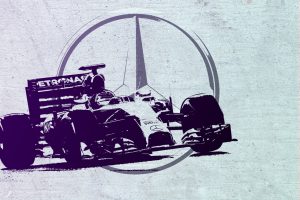Up Next

For so many years Red Bull toiled in the wake of Mercedes’ ascent to the pinnacle of hybrid-engined Formula 1, yet it rides high again having restored what Christian Horner will no doubt think is the natural order of things.
Debates now rage – and rightly so – about F1’s cost cap and the extent to which Red Bull transgressed this during its return to the top. It is possible the beginning of this new era of Red Bull success in F1 will forever be tainted by technical arguments concerning bean-counting.
Ferrari has already suggested it’s possible to gain more than half a second’s worth of lap time by over-spending within the 5% threshold (up to $7.25million) the FIA says Red Bull breached the cost cap by in 2021. Mercedes has pointed to the ongoing benefit Red Bull would gain from over-spending in one season meaning it can effectively continue ‘front-loading’ development from one campaign to the next.
Maybe so. And of course it’s in the interests of Red Bull’s (currently inferior) rivals to make these arguments. It’s also right that Red Bull should be punished appropriately if it cannot adequately defend its contention that in fact it hasn’t breached F1’s first cost cap as the FIA calculates.
But there’s also a wider point here that’s easy to overlook in the midst of all this heated political wrangling. And that is, would Ferrari and/or Mercedes actually be beating Red Bull right now if they were spending the same, or even more money than Red Bull?
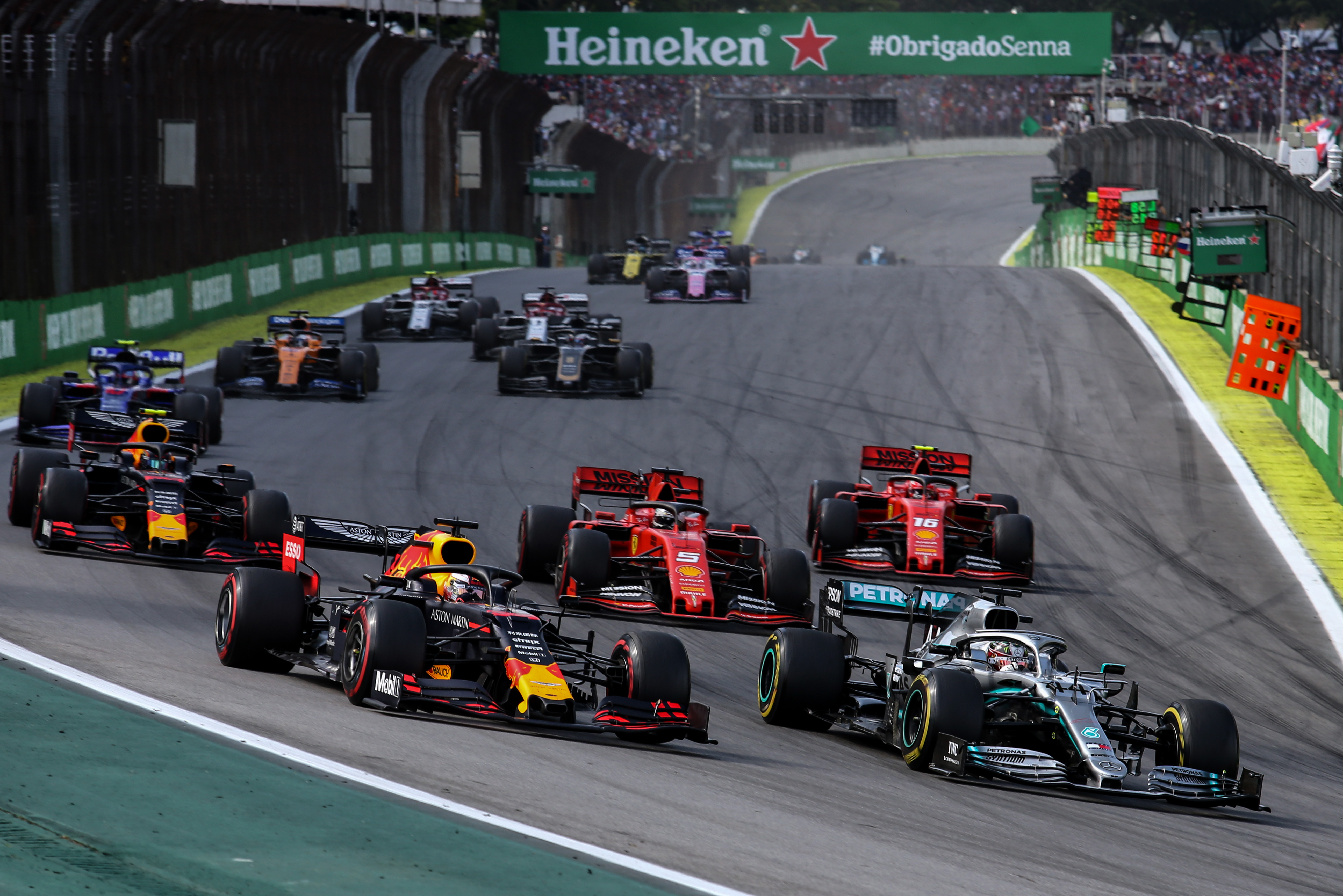
In F1’s unfettered pre-COVID and pre-cost cap era, Red Bull employed fewer people and ran to a smaller budget than both Ferrari and Mercedes. Red Bull was reportedly operating at around 80% of the capacity of Ferrari’s and Mercedes’ chassis operations, and spending around $100million less than its main rivals too.
Of course, Red Bull wasn’t winning championships then, or even properly challenging for them, but it was regularly winning races while operating more efficiently than its main rivals. Presumably, Mattia Binotto’s current calculations depend on a cost/benefit ratio that declines on a significant sliding scale, given Ferrari and Mercedes weren’t 10s per lap quicker than Red Bull during this period either.
Arguing over something in the range of <$7.25million, though obviously symbolic in F1’s new age of regulated spending, is actually peanuts when judged against the sort of discrepancies that used to exist not so long ago at the front of the grid.
Ferrari and Mercedes, as both have discussed publicly, are not used to having to make every penny count in terms of their respective investments in R&D. For F1’s perennial midfielders, this is normal. McLaren has gradually fallen back towards this level compared to its relative heyday, while Alpine/Renault (and now Aston Martin too) are works teams trying to ‘level-up’ with the cap in mind.
Of course Red Bull was also forced to downsize, but with the advantage of having recently operated in a way that’s already relatively much more efficient than the teams it regularly competes with.
Whether or not its accounting is quite right this time, there are fundamental methods and processes behind the way it goes racing that will likely underpin continued success against Ferrari and Mercedes, which have much further to travel and relatively much more pain to endure.
This applies also to the on-track battle. For years Red Bull was stymied by Renault’s relative underperformance, so had to find clever ways to overcome that disadvantage on the chassis side.
Finding efficient downforce – that is, extra (usable) load on the car that doesn’t come at a debilitating cost in terms of drag on straightline speed – is always the name of the aerodynamic game in F1, but focus is sharper when you can’t rely on engine power to pull you through in marginal situations.
Paddy Lowe has spoken in the past of the almost embarrassing horsepower advantage Mercedes enjoyed at the beginning of F1’s hybrid era. That meant it could usually afford to run a bit more wing than rivals on marginal circuits, knowing that any drag penalty would be overcome by the engine.
After producing a couple of poor cars (2014 and 2016) during this phase, Ferrari overhauled its technical department and capitalised on F1’s new ‘bigger cars, bigger aero’ revisions for 2017 to finally give Mercedes a proper rival in the championship fight.
Drastically improving its own power unit was also a major factor in Ferrari’s improvement, but of course it eventually overreached and after 2019 came to a behind-closed-doors agreement with the FIA over certain questionable elements of the engine’s architecture.
We all saw the results in 2020 – and the carryover season of 2021. Ferrari designed its car expecting to continue using the previous engine and was suddenly way off the pace because it produced way too much drag for the engine’s power output.
Arguably it still does at times, hence why it can yo-yo from being hopelessly off the pace using a low-downforce package at Spa to nip and tuck with Red Bull using a higher downforce one at Suzuka. Generally speaking, Ferrari is in a happier place when the circuit demands require less of a trade-off between downforce and drag. Increasingly poor tyre management since Hungary on the eve of the summer break has compounded this noticeable weakness compared to the supremely aero-efficient Red Bull.
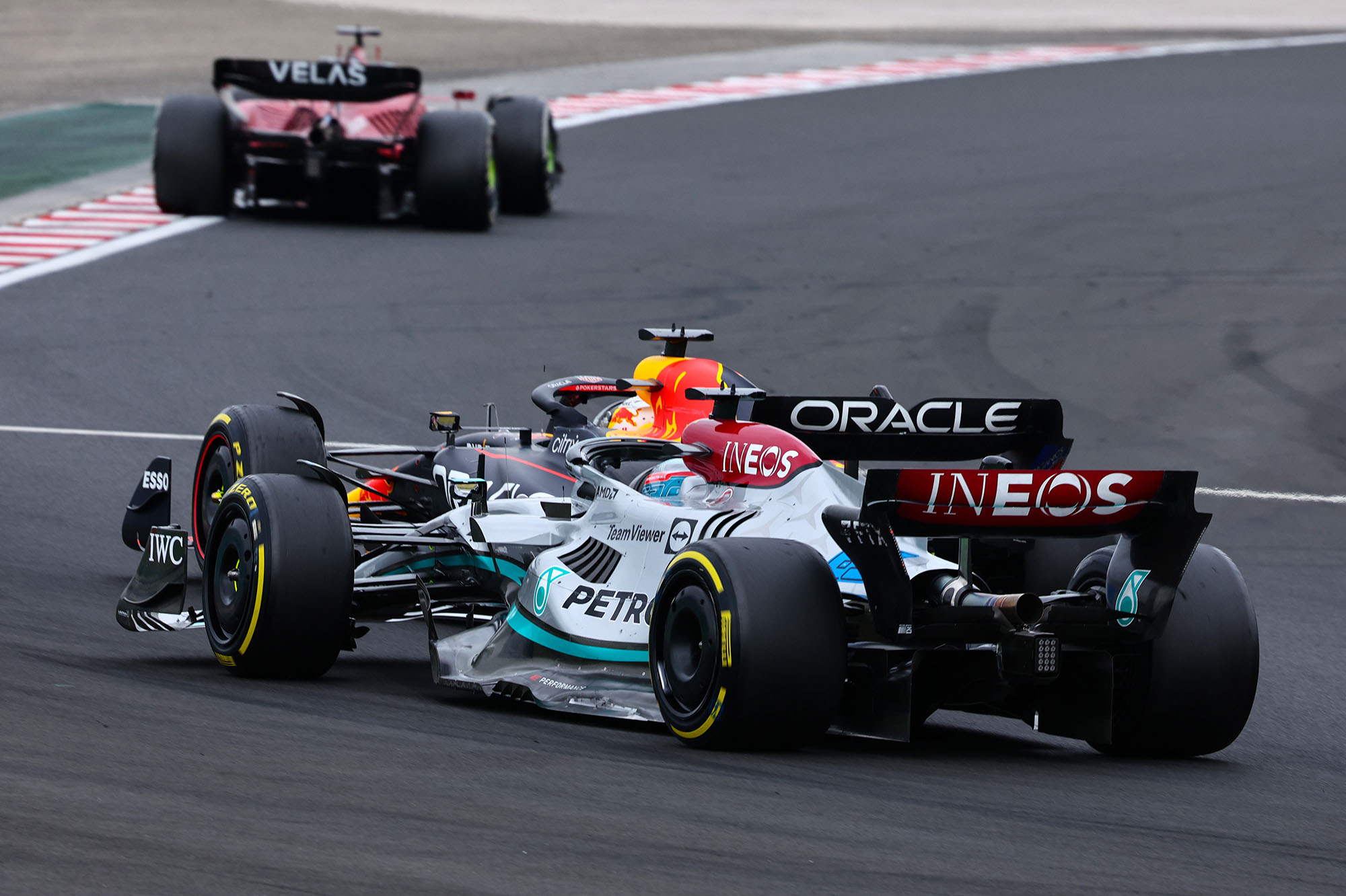
Mercedes suddenly finds itself in a reversed position compared to the early years of the hybrid era. The engines have gradually equalised over time, as Honda in particular has overcome an early deficit. GPS readings suggest the spread of power across the four manufacturers is now less than 12bhp from best to worst.
We already know this year’s Mercedes is super stiff and must run much higher ride-heights than the concept originally intended, so the amount of downforce the car produces in reality is severely compromised at almost every circuit F1 visits. The W13 is, by Mercedes’ own admission, “very draggy” (George Russell’s description in Japan) – an aerodynamically inefficient car that now lacks a prevailing power advantage to pull it through.
“We really need specific circuits to be in a position to fight for pole position,” Russell said. This statement would have been unthinkable for Mercedes in the not-too-distant past.
Ferrari and Mercedes have both openly questioned Red Bull’s development rate this season, saying it cannot be possible to upgrade (and lighten) the RB18 in the way Red Bull has without busting F1’s reduced budget cap for 2022. Well, Red Bull could just as well contend Ferrari and Mercedes are simply less efficient in their own processes.
And when you examine closely the extent of the various updates to the top three cars so far this season, Red Bull doesn’t look so far out of whack with the general cadence.
Mercedes introduced major floor updates in Bahrain, Imola and Spain, plus new wings in Miami and some significant front-end updates for Silverstone. Then development tailed off significantly over the past eight races as Mercedes made minor tweaks or introduced circuit-specific wings, though a 2023-focused upgrade – including some lighter parts for a still-overweight car – is expected for the upcoming United States Grand Prix.
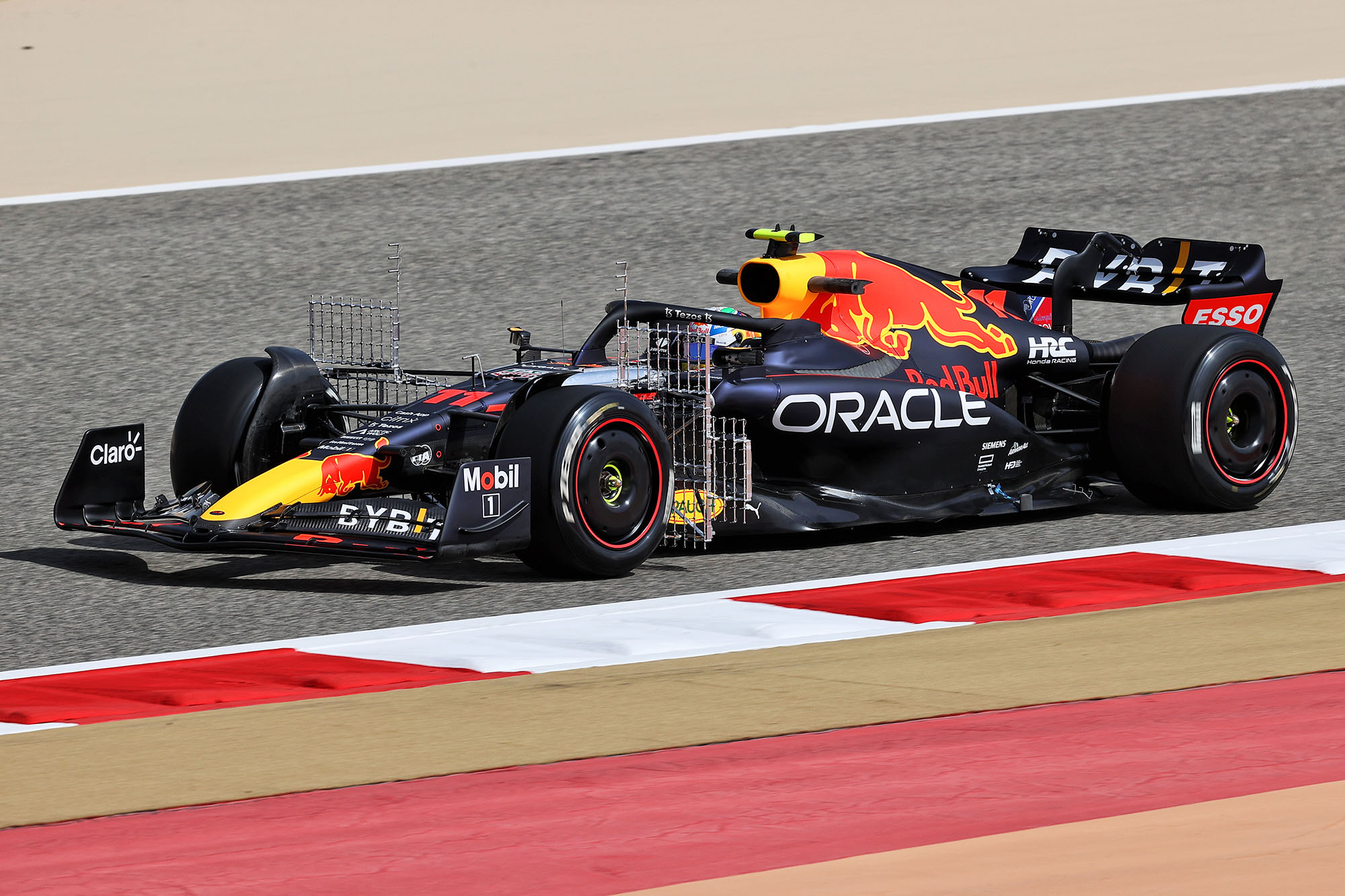
Red Bull brought a major update to RB18 for the final pre-season test in Bahrain, same as Mercedes, but nothing new for the first race weekend, same as Ferrari. It’s true Red Bull has updated frequently in-season, but not at a drastically different rate to Mercedes – and the updates have tended to be smaller in scope: winglets here, floor fences there, lighter brakes, cooling modifications etc, rather than big-ticket overhauls – which is to be expected when you know your car’s inherently competitive.
If anyone’s lagged behind a little it’s Ferrari, which introduced a new floor and rear wing in Spain (but not much at all before then), changed its mirror struts in Azerbaijan, continued to tweak its more-efficient rear wing through to Canada, then brought a big floor update for France, followed by a revised version of that recently for Japan.
In terms of races where these three teams have introduced no new updates at all to their cars, the tally currently stands at Red Bull: 5 (Bahrain, Miami, Canada, Zandvoort, Japan); Mercedes: 5 (Australia, Austria, Zandvoort, Singapore, Japan); Ferrari: 6 (Bahrain, Imola, Austria, Hungary, Zandvoort, Singapore).
Ferrari has looked like a team that started with an advantage but wasn’t completely sure how to build on that. Mercedes has looked like a team with a car that doesn’t work, throwing lots of things at fixing/understanding that through the first half of the season but now tailing off as it turns attention to 2023.
Red Bull has looked like a team with perhaps the fastest underlying package that’s needed only incremental and minor changes to unlock more performance and shed weight (particularly on the brakes).
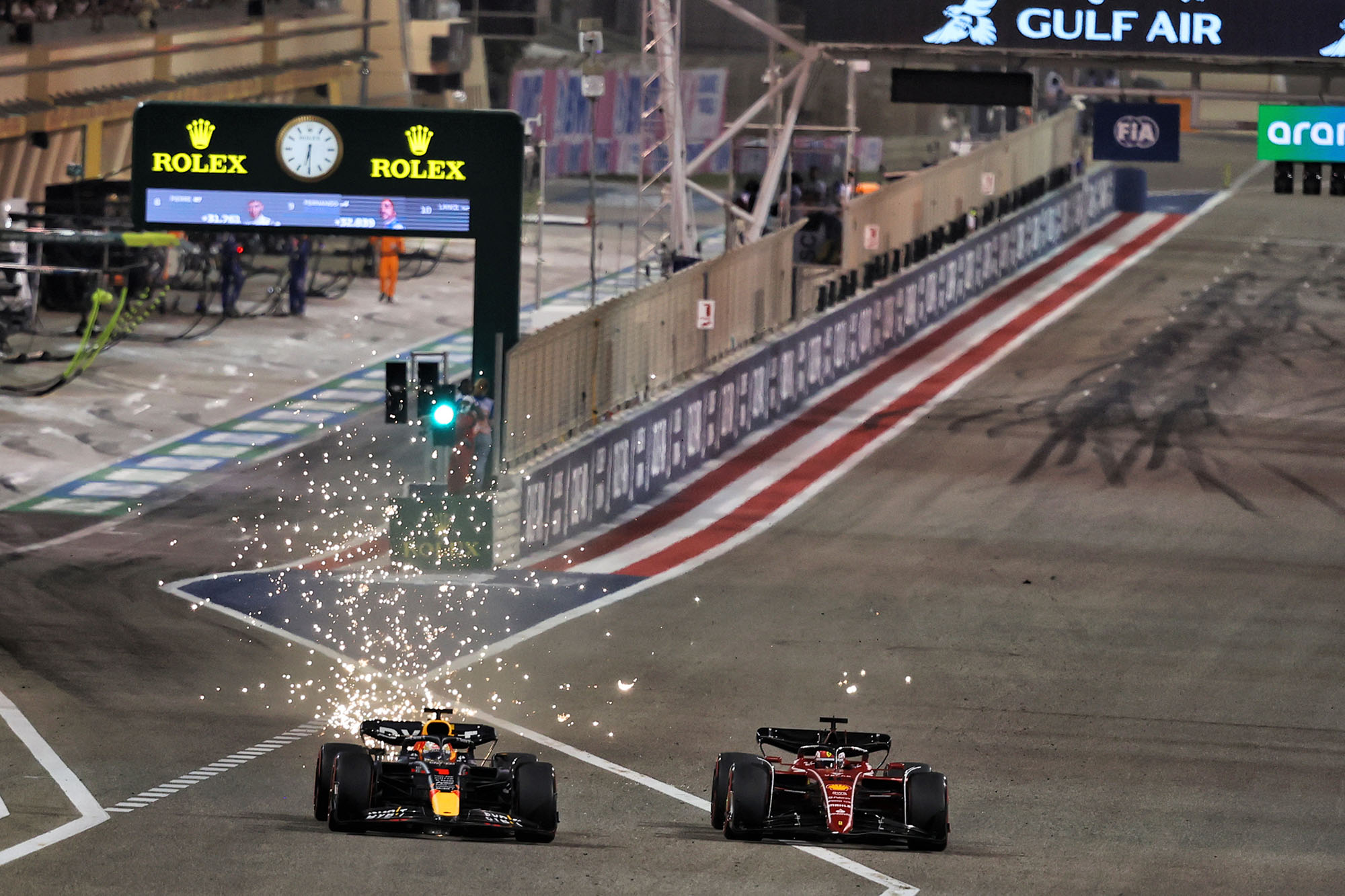
It’s not as though Red Bull has had to throw absolutely everything at a car that wasn’t up to the job initially. Back in the Bahrain season-opener, Max Verstappen qualified only 0.123s off pole position and was running within three seconds of Charles Leclerc’s Ferrari when unreliability forced Red Bull out of the race.
The pattern of this season is Red Bull building on a strong foundations with generally small tweaks and targeted weight reduction, while Ferrari has struggled to build on its own strong foundations so has gradually slipped back (while also making far too many errors).
Mercedes could probably have developed at twice the rate and still not come close with the W13, which started the season almost 1% off the pace and was similarly far off at Suzuka last time out.
So there’s an argument to say Red Bull would have succeeded even without spending restrictions for F1’s top teams. This is an organisation that has already learned how to operate more efficiently than its full-blown manufacturer opponents, that has had to produce more efficient cars than them over the years to overcome disadvantages, and is now reaping the benefits of this approach as its main opposition faces a tougher task adjusting to a difficult new reality.
This is in no way an attempt to excuse Red Bull’s apparent breach of F1’s first cost cap. If it can’t add up or classify its spending correctly then it deserves to be punished appropriately.
But a lot of the clamouring over the significance of Red Bull’s apparent over-spend seems somewhat overblown. Red Bull shouldn’t have any need to outspend its opposition to win, it should already be plenty good enough to succeed on a fraction of what it takes Ferrari and Mercedes to be competitive.




